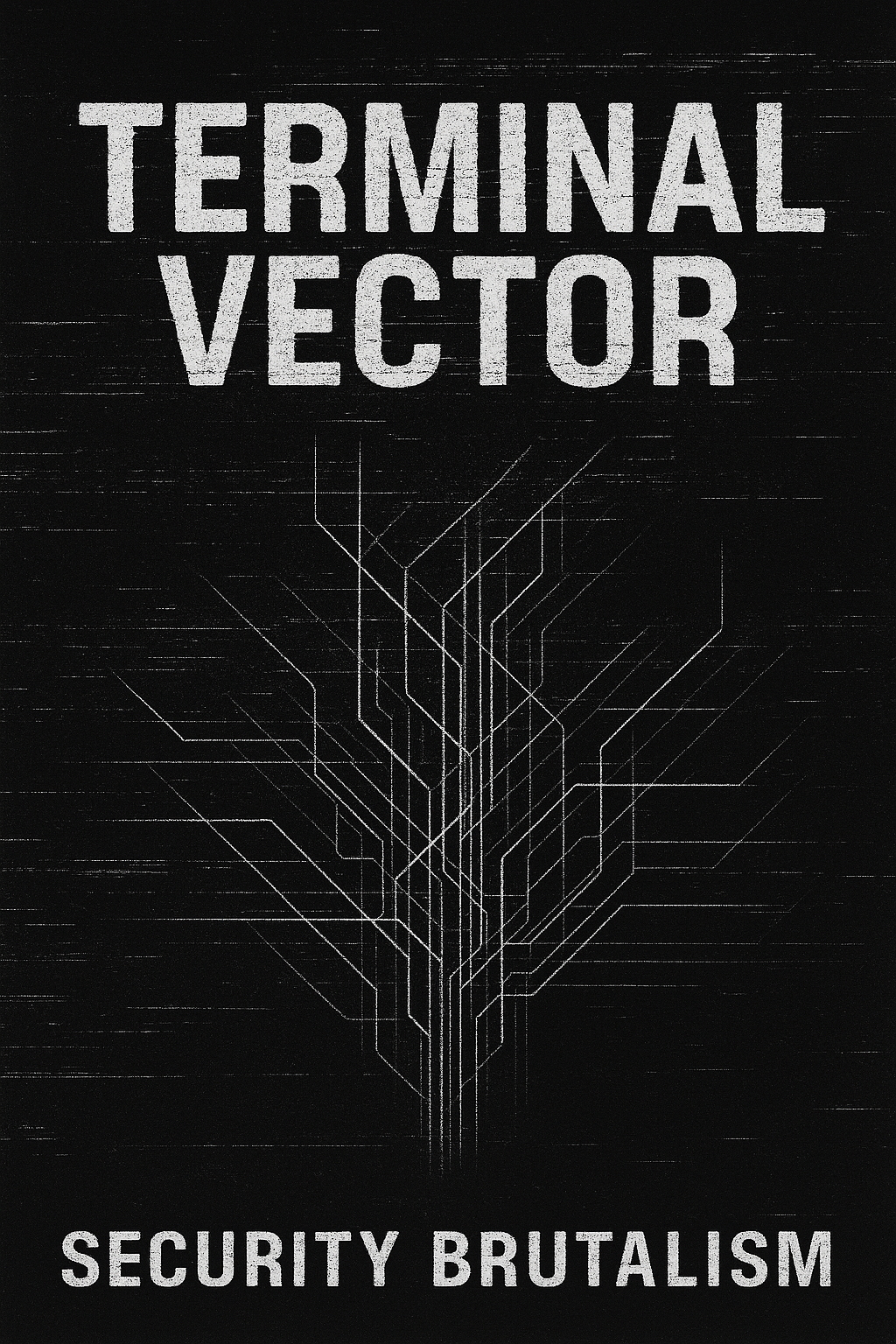The Brutalist Grid: Part 1 - Terminal Vector

The sky above SecNet 7 was razor glass and broadcast ash, pulsing with old threat intel that no one trusted anymore. Hektor jacked in under flickering sodium light, deck humming low and hot, the casing scorched from last cycle’s audit burn.
They called him a security analyst. He called himself a cleanup script with thumbs.
Hektor traced the lines of glowing architecture across the HUD overlay like a priest reading old scripture. His deck was a slab of recycled steel and copper mesh, the kind no sane corp would allow near their polished systems. But this wasn’t a corp job. This was clearance through constraint; Security Brutalism in raw form.
"Deck's dirty," Vann said over the bone-link, her voice spliced through static like it had come off a back-alley synthbox.
"So’s the stack," Hektor answered.
They were inside now. No safe zone. Just telemetry scrape and config bleed, legacy code like rust behind the walls. The review grid lit up, flat, brutalist, and bare. No polish, no comfort. Just the bones of the system, lit like nerves in firelight.
Layer after layer peeled back. IAM policies nested in circles of recursive denial, S3 buckets flapping open like wounds in a vacuum. Everything labeled. Everything visible.
What you see is what's enforced.
That was the first law. No trust in abstraction. No faith in obscured intent. The system didn’t care what you meant. It enforced what you declared. And it showed its scars.
"You gonna audit that load-balancer logic or admire the skyline all night?" asked Vann, voice crisp through the bone-comm. She was already knifing through the intake layer, bypassing the ornamental controls of the GUI review framework with a series of silent bash stabs.
"I'm savoring the entropy," Hektor muttered. "Design this dense only happens when five teams build the same feature and no one has root."
Vann snorted. "Welcome to post-acquisition governance. Just tag the tier-one vectors and flag anything that smells like middleware privilege escalation. We’re not here to fix theology."
Vann flagged a container: thin wall, bloated privilege set, a shadow-process tickling the mesh for outbound routes.
"You see that?"
"It’s probing. Like it wants out."
"Kill it."
The system they were in wasn’t just a mesh of tech; it was a sociopolitical fossil. Every service routed through four abstraction layers. There were controls on controls, virtualized until nothing knew what real was. But at the heart, past the dashboards and policy wrappers, lived the bone-logic: where trust was either true or lie.
No hesitation. Hektor blackholed the process, watched the fault cascade, then reroute. The mesh flexed, restructured. No alarms. No collapse. Just recovery like muscle memory.
They moved fast, leaving behind tracer tags for the Compliance Droids to scrape later. Most would never understand the signals. That was fine. This wasn’t compliance. This was survival.
“Found a Tier-3 vendor API wired into the privileged container mesh,” Vann said. “Hardcoded keys. Overprovisioned scopes. It’s a trust wound.”
“Terminate or isolate?”
Vann hesitated. “Terminate. It’s not even pretending anymore.”
Hektor nodded, fingers flicking across the brutalist interface they’d coded themselves; no colors, no curves, just black text on dead white. One keystroke and the mesh bled static.
What breaks doesn’t collapse the system.
They were moving even faster now, fingers ghosting over keys. The system didn’t slow them, it dared them. Each service was a wall of hard-edged configuration and purpose, nothing more.
"This system," he said, watching the autowire backtrace fail to rebuild, "wasn’t designed. It happened. Like rust. Or fungus."
"Which is why we don’t patch," Vann replied, pulling back. "We expose. Let the org see its own scars. That’s the method. That’s the way."
Yes. They didn't patch. They disclosed. They didn’t optimize. They contained. Code either stood or broke. Nothing in between.
The logic was brutal, but it worked. It didn’t flatter. It didn’t fail silently. The kind of architecture that left bruises when you touched it.
A silent beat passed between them. Not camaraderie, just clarity. Brutalism didn’t need applause.
A final script blinked on Vann’s screen, wrapped in a JSON hellscape.
"This thing pretends to validate users. All it does is echo trust."
"Scaffold it, strip the lie. If it breaks, we’ll see what’s real."
And they did. The script fell, the service rerouted, the system staggered, then stood again. Not pretty. But functional.
What remains is strong and recoverable.
They jacked out together, HUDs flickering off like dying streetlights. Just silence and system logs.
"You think they’ll notice?"
"They’ll feel it. In the uptime."
Their review slate faded to a single line:
And with that, they disappeared into the network again; ghosts with scalpels, carving order from entropy. The HUD powering off with a message...
“What you cannot simplify, you must contain. What you cannot contain, you must kill.”
Somewhere in the stack, a CI pipeline hiccupped. Another system tried to self-heal.
They were already gone.